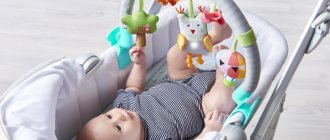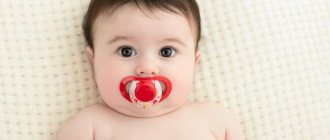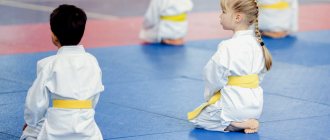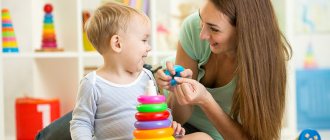First: the age and capabilities of the child
It has long been known that children differ from each other in cultural, mental, emotional and physical development. This means that you should also select toys for a child taking into account individual characteristics. If you buy your child an item that is intended for a teenager, he will not be able to use it, and most likely he will simply break it. And vice versa, if you buy a schoolchild a toy intended for a baby, he will not be interested in it and will remain collecting dust in the corner. In addition, take into account the mental abilities of children, because a toy that they cannot figure out on their own can greatly reduce their self-confidence and self-esteem.
A good toy suits a child, makes him happy, develops his abilities and teaches him useful things, and also gives him a willingness to learn new things.
How to choose the right toys
Child development
| Rating 20Research shows that electronic toys have no advantage over traditional ones |
- Type
- Ask
- Send to a friend
- Share
- subscribe to news
American scientists have published the results of a study, according to which parents are recommended to buy traditional toys for their children and abandon electronic ones, which were previously thought to contribute to child development.
Electronic toys, scientists note, interfere with interaction between children and parents and with each other. Moreover, many claims that electronic toys contribute to child development have not been scientifically proven.
In contrast, the use of electronic toys in the study had
negative consequences, in particular, a decrease in certain psychological functions and general motor actions (balancing, running, etc.). For example, if a child uses e-books rather than traditional paper books, he or she will understand the content less well.
In other words, according to scientists, electronic toys and devices have fewer benefits for children than traditional ones.
The most common types of toys
So, what toys are most conducive to children's development? They can be classified according to the following criteria:
1. Toys that strengthen fine motor skills
Certain toys develop a child's fine motor skills: finger dexterity, wrist flexibility, etc. Playing with these toys requires the child to grasp, hold, or manipulate objects. For example, a child can build structures from blocks, solve puzzles, or cut out figures from paper.
2. Toys that develop imagination
Toy cars and airplanes, dolls, toy dishes, etc. - all these are attributes of symbolic games and games of imagination. The simpler the toys, the better, as they give the child more room for imagination. Every time a child plays with such toys, he can create new worlds in his imagination.
3. Toys that promote creativity
Children often enjoy creative activities: drawing, modeling, etc., especially if the child feels freedom of expression and is not afraid of criticism. For creativity, a child may need colored paper, scissors, colored pencils, paints, plasticine, etc.
4. Toys that develop imaginative thinking and language skills
Board and card games help teach children basic math, strategic thinking, social skills and problem solving. It is also beneficial to read books with your child as this will help him develop his vocabulary and language skills.
5. Toys that promote physical development
Many toys, especially electronic ones, do not help a child's physical activity. Sitting for long periods of time during play often leads to health problems (such as obesity) and provides little opportunity for a child to develop motor skills. Certain toys promote physical development: bicycles, balls, jump ropes, etc.
Finally
The main purpose of any toys is to promote positive and supportive interactions between children or between children and parents. Therefore, both traditional and electronic toys should not be used to replace social interaction, but, on the contrary, to develop it. In this context, the best toys are those that promote language and problem-solving skills, cooperation, creativity, etc.
In addition, researchers focus the attention of parents on the fact that toys for a child should be safe and appropriate for his age and level of development.
Therefore, choose safe toys for your child that develop his imagination, promote interaction with other children, teach him to solve various problems, and also stimulate mental and physical activity. Electronic and sound toys are not necessarily the best. Sometimes the best toys are the simplest ones because they encourage children to use their imagination while playing.
Rate this publication
Article rating: 5.00
out of 5 based on
4
ratings.
Related links:
- ▶ How to choose a good educational toy
- ▶ About the benefits of gender-neutral toys for children
- ▶ How to choose educational toys
- ▶ The benefits of games for preschool children
- ▶ More articles on child development
Child development 04/01/2019
Third: satisfying psychological needs
A good toy prepares children for future learning and develops their innate inclinations and desires. In addition, it creates an opportunity for the child to express his preferences.
- The right toy stimulates children's cognitive development, trains their cognitive and reasoning skills, and gives them the opportunity to imagine and invent.
- The toy should help the child learn new social roles, encourage empathy and solidarity, and provide the opportunity to compare individual play with collective play.
- A good toy is safe. It has no sharp corners, it is not too heavy, but it is stable and maintains balance well. It is made from environmentally friendly material, does not contain small parts, and the paint applied to the surface is non-toxic.
- The right toy corresponds to the reality surrounding the child. It is attractive in appearance and color, and evokes positive emotions. In addition, the toy must meet aesthetic principles.
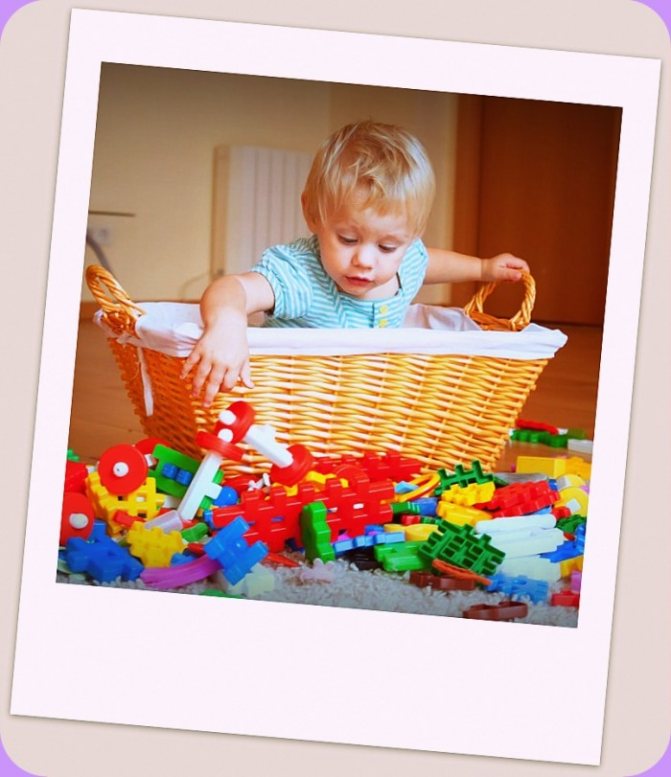
Choosing toys by age
Toy packaging
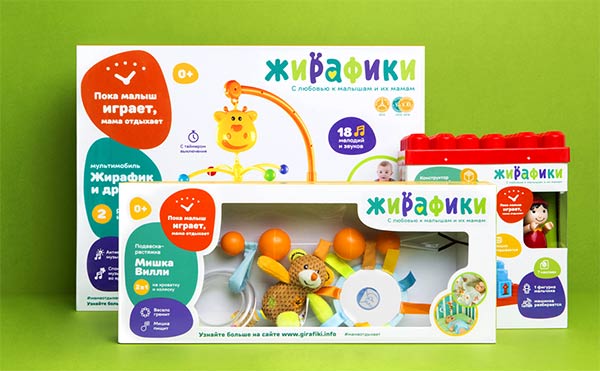
You should not buy toys without packaging. If a toy is displayed in a store window without packaging, then the seller is obliged to provide the toy in branded packaging. When choosing and purchasing children's toys, it is necessary to check the durability of the color and the material from which the toy is made. Too bright toys should be avoided: these are the toys that negatively affect the development of vision and the baby’s neuropsychic sphere. Soft toys should have strong seams, and the filling material and fabric should not emit unpleasant odors.
If you follow these simple recommendations, you can choose and purchase a high-quality and safe toy.
- Tags:
- choosing a toy for a child
How to choose the perfect toy
Before you buy a toy you like, ask yourself a few important questions.
- Is this toy appropriate for your child's age? Will he cope with it on his own? Will he be able to understand the principle of operation?
- Is the toy attractive from a child's point of view?
- Does the toy comply with Islamic standards?
- Is the toy safe? If the baby plays with her alone, will it turn out that he will be able to harm himself?
- Does the toy awaken imagination or the desire to invent?
- Does it teach morality? Is the toy intended to be played alone or in a group?
- Doesn't using a toy lead to disbelief?
Only if you answered yes to all these questions, you can safely buy the toy you like and feel free to give it to your child: he will definitely like it.
Educational and developmental toys
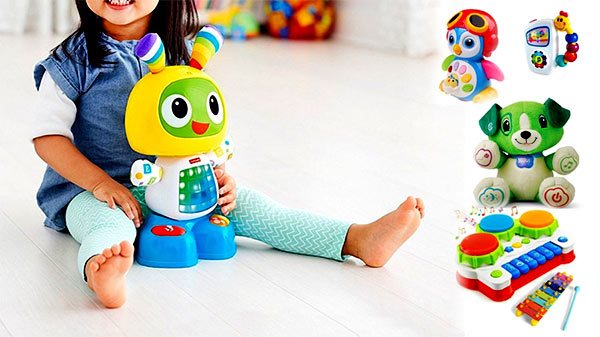
Secondly, all children's toys, regardless of the child's age, must be educational and developmental. In addition to interest and entertainment, they should benefit the child. For example, when a baby begins to crawl and masters the first walking skills, he will be very interested and useful in various moving toys (ducklings or dogs on wheels, walking baby dolls, wind-up cars, etc.). During the game, the child will reach for the toy and, unnoticed by himself, will begin to crawl or walk more and more confidently.
A three-year-old child will be interested in playing with dolls, all kinds of Doctor sets or soldiers. While playing, children will begin to simulate situations from adult life and gradually master the norms of social behavior. In addition, children of this age category need various games and toys aimed at the active development of fine motor skills.
Among them are felt-tip pens, plasticine, drawing paper, colored pencils, paints, and glue for creating a variety of applications.
Recommendations for parents “How to choose the right toy for a preschool child”
Maria Ivanova
Recommendations for parents “How to choose the right toy for a preschool child”
Many parents , unfortunately, do not know what their child , what toy to choose , what game . They buy everything randomly. I would like to advise you on what toys , games, educational aids you should buy depending on the age characteristics of the children .
Very young children from 0 to 1 year old, as everyone knows, need rattles. But rattles are also different. The simplest ones, which just rattle, will quickly get boring even for the little ones. So don't limit yourself to just them. After all, even a small child needs development , and not just fun. Buy your baby funny keys, combs, faces, and cubes on a bunch. The child will be curious to finger them and examine their shape, which is very useful for fine motor skills of the fingers. Of course, you should purchase a set of plastic or rubberized animals: a bunny, a bear, a fox, a wolf, an elephant, a cat, a dog, a cockerel, etc. The baby will recognize each animal from an early age and imitate its voice. The baby should have balls. You should not buy large balls. The ball must fit in the child . Transfer the ball from hand to hand with your child , roll it, throw it. Neurologists advise children to ride on large inflatable balls while lying on their stomachs. This calms and balances the child . Don't forget about books with bright, funny pictures and simple quatrains. Teach your baby to point with his finger at characters he knows and their parts (nose, ear, tail)
.
You can buy a pipe or whistle. At first , it will be difficult for the child to blow to make a sound, but after numerous trainings you will see the result. Whistles are very useful for the functioning of the respiratory system and speech apparatus. Children from 1.5 years old can purchase pyramids of different shapes and sizes, various inserts, gurneys, and a large builder. At this age , or even earlier, buy your child pencils , finger paints, modeling material. Under the guidance of an adult, the child will be interested in drawing with his fingers, squeezing, pinching off pieces of plasticine, and drawing simple lines with pencils. All toys for children should be bright, safe, and easy to clean with detergents.
For children from 2 to 4 years old, the time has come to actively explore the surrounding space and develop physical activity. At this age, the child should definitely buy a ball (a larger one, which he will kick, toss, roll, ring throw, skittles, hoop). If a sports corner is installed at home, it will be simply wonderful! During this age of toys for boys and girls begins
Girls are given toys that symbolize their femininity: dolls, dishes, doll furniture, handbags, children's jewelry, strollers, etc. You can often notice that mothers buy Barbies
,
"Winx"
(and even worse
"Monsterhigh"
).
Should not be doing that. These dolls are for older girls who can already appreciate female beauty. Plus they have a lot of small parts. For girls 2-3 years old, it is best to purchase baby dolls and baby dolls. Girls of this age, due to their age characteristics , do not yet have developed gaming skills. They repeat the actions shown by adults. The baby will be happy to rock, swaddle, bathe, and feed “her daughter
.
There shouldn't be many dolls. Buy 1-3, the child give each one a name, the doll will take its place in the room.
Of course, you need to buy a stroller, a crib, underwear, and a handbag. The main toys of any boy are cars. For kids 2-3 years old, it is better to buy large cars, where all parts are clearly visible, and from 4 years of age you can buy smaller models. I always have a negative attitude towards robots, transformers and weapons (pistols, sabers, etc.)
.
They do not have any developmental , but they develop aggression in children. For kids of this age there is a huge selection of construction toys for every taste. You just need to show and teach the child to play with it and build the buildings correctly .
Don't limit yourself to a set of toys . You should also think about educational games, manuals and art supplies. The child should have board games according to age to develop attention, memory, thinking, logic: “Fold the figure”
,
“Choose by shape”
,
“What does it look like”
,
“Loto”
,
“Dominoes”
,
“Mosaic”
(large, small, tabletop and floor-standing,
“Puzzles” (from 4 to 12 pieces)
. Do not buy a lot of games at once
your child to play it , play together with the whole family. When the game gets boring or the child grows up , choose new games in the store.
You should not exclude the artistic creativity of children, which, unfortunately, in my experience, many parents . Sometimes in the house a child has nothing but pencils . But now there is such a wide range of creative materials: pastels, crayons, sanguine, safe polymer clay that will not stain anything for mom, modeling mass and much, much more. Don’t be lazy, dear parents , introduce child to creativity ... And even if the famous Vasnetsov or Surikov does not grow out of him, you will open to him a world of wonderful and exciting activities.
For older preschoolers from 4 to 7 years old, the choice of toys has no limits . I always advise parents to carefully consider buying a new toy . At this age, you can invite your child to choose a toy in the store himself , but this is only if you are sure that there will be no tears or hysterics. Ask your child what he wants and what he dreams about. Agree with him that you are only going to buy a remote control , and nothing else. The variety on the shelves can take a child by surprise , and he will want to buy something that you did not expect, and your refusal will cause a storm of protest.
Children of this age category are very active in all areas of activity. But take a closer look at your child and you will notice that he prefers something more. Some people are passionate about drawing, some are engaged in construction, others are interested in educational games. Support your child's , but don't forget about other development paths. Switch your attention to other games and hobbies.
Girls of senior preschool age play with interest in cute cartoon ponies, beauties Barbie and Winx, prefer albums with clothing models for dolls, and are not indifferent to children's jewelry. They can be introduced to embroidery and bead weaving, but all this is under the supervision of adults!
For boys, you can purchase complex models of cars, planes, boats, trains on control , and various construction kits.
I would also like to say something about soft toys . Not only children, but also adults are not indifferent to them. There is so much tenderness when you look at cute little cats, bear cubs, bunnies... Of course, such toys are worth buying for your baby, but do not forget to wash and treat them more often to avoid allergies in the child . Small children (and not only)
love to sleep with them.
It has long been known that these toys create psychological comfort while falling asleep. Such toys are pleasant to stroke , squeeze, hug - that’s why children need them.
But you shouldn’t fill your whole house with these cute creatures; buy them wisely. Childhood does not end at seven years. The child goes to school , but he does not stop playing. Some children have already developed certain hobbies, and they enjoy doing them. Some people find it difficult to choose. the child with this , dear parents . It’s not without reason that they say: “The way a child plays , that’s how he will behave in adulthood.”
ChildrenSeagull
Wooden toys are the best
We have already written about what toys are needed in each age period. Parents often ask the question of how to choose a quality toy, what to look for when buying?
Toys, educational games, books, cartoons occupy a very important place in the education and development of children of preschool and primary school age.
How high-quality play objects surround a child determines how all his mental processes will develop: memory, thinking, attention, emotional sphere, ability to adapt to the surrounding social society, and finally, his state of health.
There are many enterprises in the world that produce a wide variety of toys in huge quantities. As a rule, many of them have their own laboratories that monitor the quality of children's products, but, unfortunately, some enterprises do not carry out the necessary tests on the quality of children's products.
Television showed a story about the arrest of cars that were transporting toys from China. These toys were destroyed because... were made of toxic materials, the paints contained toxic substances, which posed a threat to the life and health of children. If these toys were destroyed, there is no guarantee that the same dangerous products did not end up on the market. The prices for these products are lower, and the quality is very poor, there is no need to buy such toys.
Not only toys, but also cartoons produced abroad raise great doubts. For example, a series about Tom and Jerry. This is some kind of surge of all kinds of violence. It is clear that in life a cat runs after a mouse, but in cartoons they show such episodes that it becomes scary for the psyche of our children; they quite often perceive all the actions of the characters as a guide to action. Such cartoons do not serve any educational or developmental purposes.
If parents want to see their child smart, good, comprehensively developed, healthy, then purchasing toys and educational games must be approached with the utmost seriousness:
1.buy toys from famous brands;
2.require a quality certificate;
3. select toys according to the age of your child;
4. when purchasing, take into account the wishes of the baby (a toy for a child, not for dad or mom);
5. Remember that not all advertising corresponds to true quality.
Here is a list of toys that we recommend purchasing for preschool children.
Game aids necessary for physical development -
sports corner, balls of different sizes, swings, jump ropes, rocking chairs.
Musical toys -
keyboard instruments, tambourines, xylophones, accordions, pipes, drums, castanets - all of them contribute to the development of musical ear.
Educational and household toys -
game sets “Hospital”, “Zoo”, “Wild and Domestic Animals”, “Transport”, “Vegetables”, “Fruits”, “Mushrooms”, human figures, dolls, different types of tableware (tea, tableware, etc. ), room or house for dolls, furniture. All these games will introduce children to the world around them.
Toys aimed at sensory development -
pyramids, cubes, mosaics, various types of puzzles, wooden and plastic construction sets, inserts will introduce children to primary colors, their shades, shapes and sizes of objects, and strengthen fine motor skills.
Benefits for creative development -
plasticine, pencils, felt-tip pens, clay, cardboard, colored paper, special paints for finger painting, crayons, paints - all these items develop children's imagination and teach them to create their own masterpieces.
When buying toys, consider not only the child’s age, but also his desires and hobbies. After purchasing educational games, read the rules of the game with your child and play with him. Playing together will bring pleasure to the child and his parents.
Love your children, give them this joy.
The history of the origin of the wooden toy
“Toys for preschoolers” consultation on the topic
"Toys
for preschoolers"
“A toy should be a springboard for a child’s dreams”
Lev Kassil
Prepared by the teacher
Siyapova Liliya Shamilevna
It is impossible to imagine preschool childhood without games and toys. All aspects of the child’s personality are formed here. This explains the educational possibilities of play, which psychologists consider the leading activity of a preschooler.
Even in good conditions, with adequate nutrition, the child will develop poorly and become lethargic if he is deprived of exciting games.
An indispensable companion to the game is a toy.
The word “toy” for many is synonymous with trinket and fun. While this is a special subject that has enormous power, has the ability to teach. And the future of our children depends on how we approach the choice of toys, whether we know how to properly organize the game, direct its actions, and develop the plot.
The importance of games and toys for the development of a child in preschool age is often underestimated. Most parents do not understand how important the right toys are for shaping a child's personality. How and what games should a child play? Parents receive information about this mainly from advertising, which reflects the interests of manufacturing companies, which do not always coincide with the interests of the child.
What kind of modern toy is it? And what should it be?
(teachers' answers)
Basic requirements for toys:
- A toy for a child should be a source of joy, a motive for play. It must create conditions for development, leaving the opportunity for independent creativity
- A children's toy must be artistically and technically well made, i.e. completely reproduce the original in shape, proportions, coloring and give a true, real image of the depicted object.
- Safe
- Must be age appropriate for children
- Multifunctional (promote the development of creativity, imagination and thinking)
- Have didactic properties (they contain ways to teach a child to design, become familiar with color and shape, etc.)
How much do you think a toy for preschoolers should weigh?
The maximum weight of a toy or a separate element of the game must correspond to the strength of the child and not exceed 400 g for preschool children. A useful toy sets itself a noble educational task - to teach goodness and beauty, wisdom and compassion.
There are two dolls in front of you, please tell me what feelings each of them evokes in you? How would you like to play with them?
(Answers from teachers)
Yes, that's right, Barbie is a model of a woman. You can dress her, undress her, and buy new things for her. Barbie conveys a consumer lifestyle - endless outfits, entertainment. In relation to this doll, the girl will feel more like a maid, a servant, and not a mother or nanny. This is not a small creature that you want to nurse, feed, put to bed, treat, i.e. to feel at least a step higher, more mature. A doll at this age should focus the child’s attention not on “beauty,” but primarily on feelings of care.
Many people remember when dull monotony reigned in children's goods stores. I must say that the children's toys were cute and funny. Now, in stores, the selection of toys is truly huge. Towel dolls have appeared, which are difficult to distinguish from a living child, models of equipment that subtly reproduce the small details of real cars and airplanes, as well as tropical dolls, vampires and other playful evil spirits.
Such creations can hardly be called toys; rather, they are anti-toys that do not contribute to the development of the child, but on the contrary lead to the destruction of his personality and moral disorientation.
Not all scary toys are bad, because even in the kindest fairy tales there are negative characters with whom the good heroes fight and win. The purpose of a scary toy is to teach a child to overcome his fear; this fear should be conditional and predictable.
Modern toys are overly detailed, cyborgs are a terrible parody of humans, monsters are dolls with distorted faces, horns, with shoes that come off with part of the leg, robots with sweets hidden in their heads - such a richness of detail overloads the child’s psyche, irritates him, and leads to the emergence of uncontrollable fears.
But it is not all that bad. We have good, wise toys.
Toys for preschool children can be divided into several types:
1. Story-based, or figurative, toys - dolls, animal figurines, furniture, dishes, household items, fairy-tale characters. Some of the favorite toys for children are those that depict animals: teddy bears, tiger cubs, dogs. During play, children seem to inspire them, showing care, talking to them, guiding them.
2. Technical toys. These are different types of constructors, transport, all kinds of technical structures and mechanisms. Various construction sets such as Lego are especially popular among children. They are necessary for children, as they develop thinking, fine motor skills, spatial orientation, and creative abilities.
3. Construction toys consisting of geometric bodies. Among them there are large ones, such as scooters, children's pedal cars, tractors, etc. Sitting at the table, a child will most likely want to play with small, stable toys. For games on the floor, larger toys are needed, commensurate with the child’s height in a sitting and standing position. Small toys for the yard are not suitable.
4. Toys are fun. They are based on movement, surprise, unexpectedness. Their purpose is to amuse children, cause laughter, empathy, joy, and cultivate a sense of humor.
5. Sports and motor toys. A special type of toy that helps increase children’s motor activity, develop dexterity, accuracy, and endurance.
6. Theater toys. develop aesthetic taste, speech, imagination and the ability to reproduce people’s actions, and help increase emotional stability. These include, for example, finger toys, glove toys, and puppets.
7. Musical toys - rattles, bells, bells, pipes, toys representing pianos, balalaikas and other musical instruments.
8. Didactic toys. They have a special place, because... with their help, teachers introduce children to color, shape, size, etc. These include multi-colored inserts, boxes with slots, nesting dolls, mosaics, puzzles, lotto, etc. These toys instill in children perseverance, concentration, perseverance, dedication, the ability to get things done, and also contribute to the development of fine motor skills.
A toy is useful if it:
- Safe;
- Aesthetic;
- Corresponds to the age capabilities of the child;
- Multifunctional (provides an opportunity to develop the child’s abilities: physical, spiritual, moral, etc.);
- Made from environmentally friendly materials;
A toy is harmful if it:
- Provokes a child to aggression and cruelty;
- Causes fear or anxiety;
- Has a rough naturalism;
- Degrades human dignity;
- Causes psychological dependence to the detriment of the full development of the child;
- Distorts the perception of surrounding reality
Therefore, dear educators, parents! Teach children to play, use substitute objects, imaginary objects. For children to play with pleasure, a pedagogically competent selection of toys is necessary.




